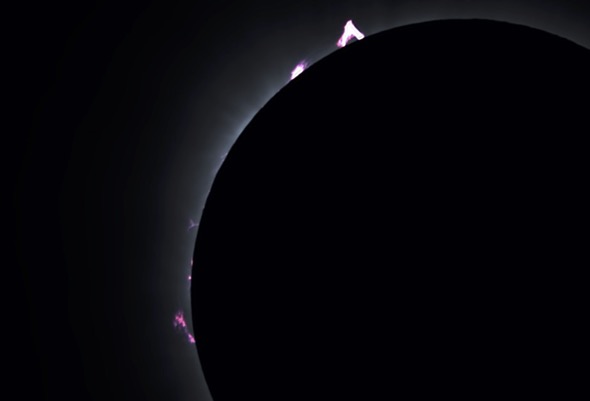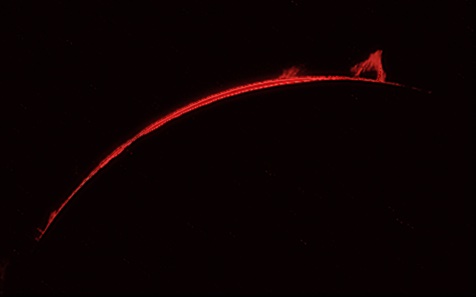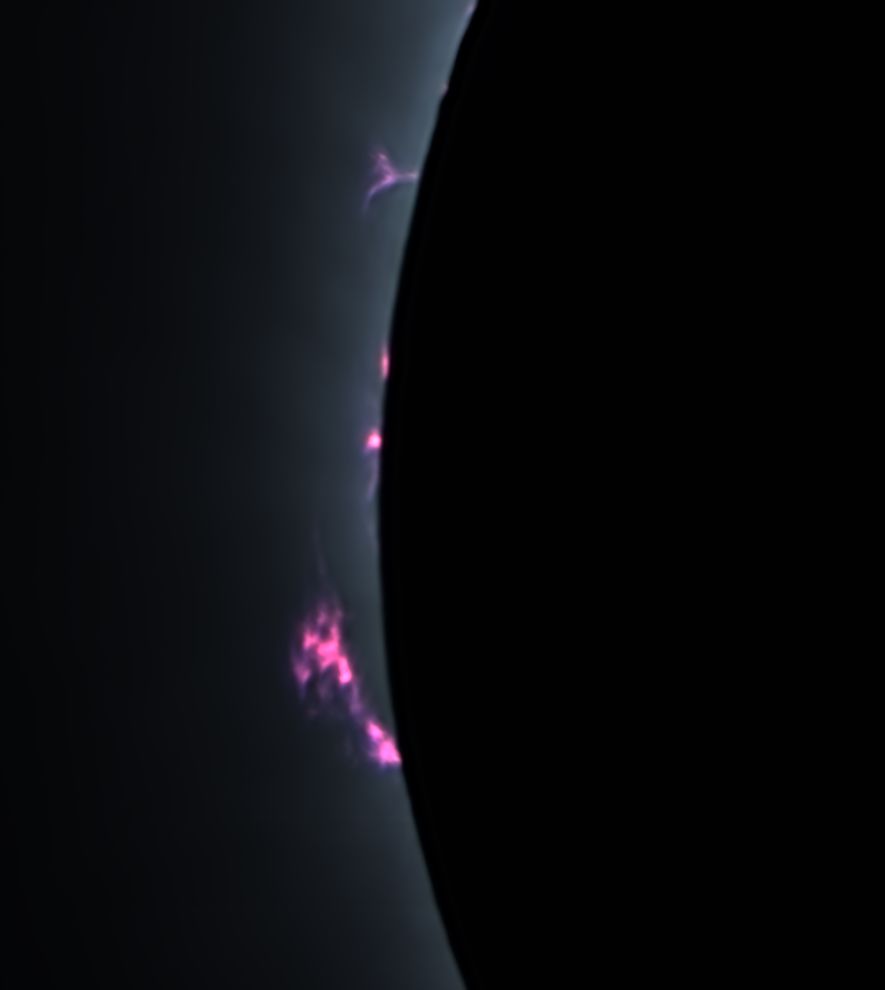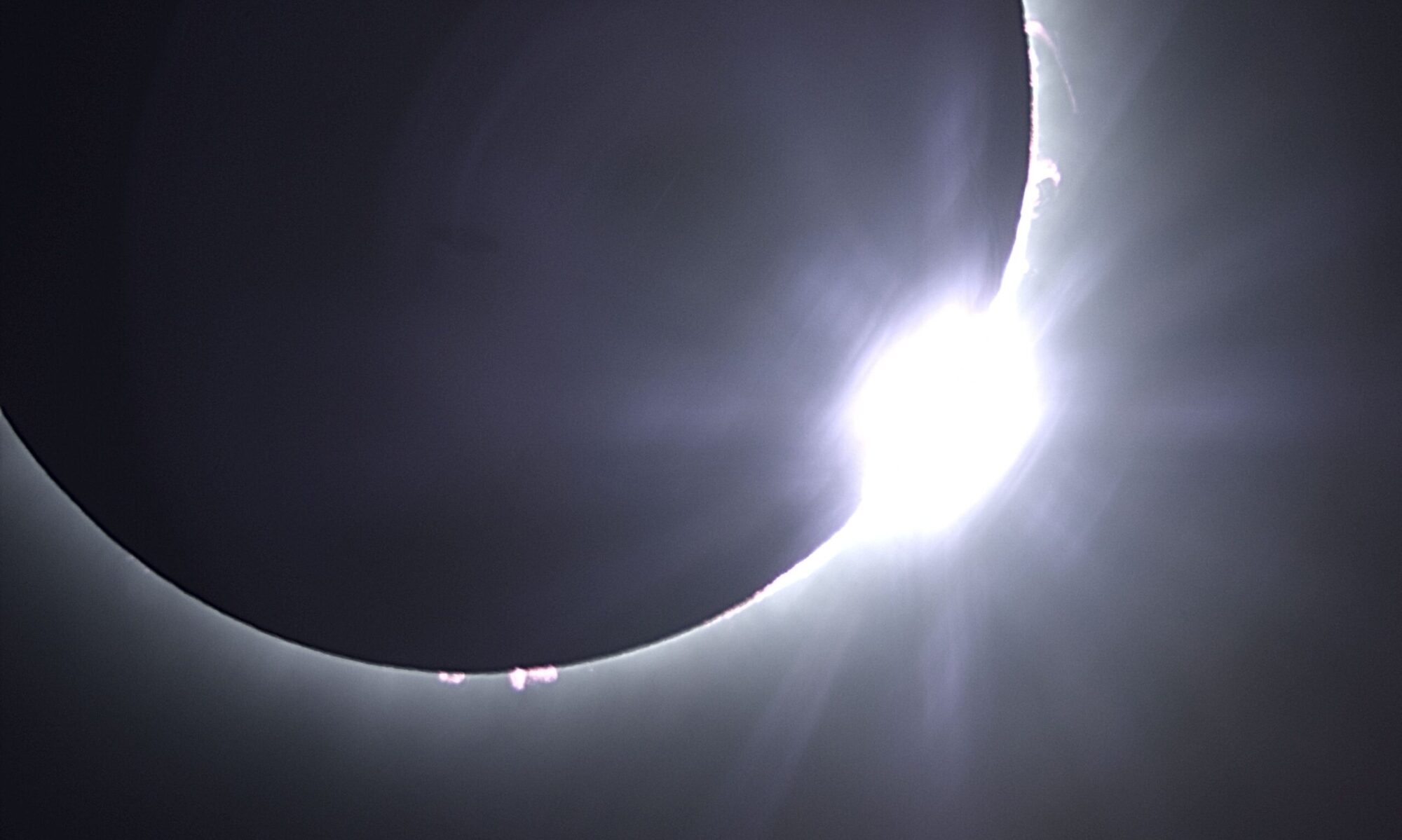A solar prominence is a large plasma and magnetic field structure extending outward from the Sun’s surface, often in a partial or complete loop shape. Originating on the bright photosphere, prominences can extend through the thin chromosphere and into the solar corona, glowing with the pinkish glow characteristic of excited hydrogen atoms. Under normal conditions they cannot be seen, due to the brightness of the Sun’s photosphere, but when this is blocked by the Moon during an eclipse, they can become very apparent.
TTU students Evelyn Brachey and Aaron Lively both chose to image solar prominences as their projects for this class. They did this by recording images at about 20 frames per second using a color camera on a 1260 mm focal length telescope while the eclipse was in its total phase. During the 4 minutes of totality, the motion of the Moon across the face of the Sun exposed and hid different provinces, so Aaron focused on those seen just after the beginning of totality and Evelyn on those just before it ended. They combined several frames to produce the images below. (They also attempted to record prominences using a dedicated Hydrogen-alpha telescope, but that was less successful, resulting in only a single image of one of the brightest prominences.)
Aaron’s images:
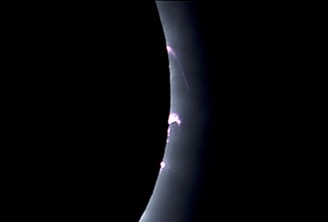
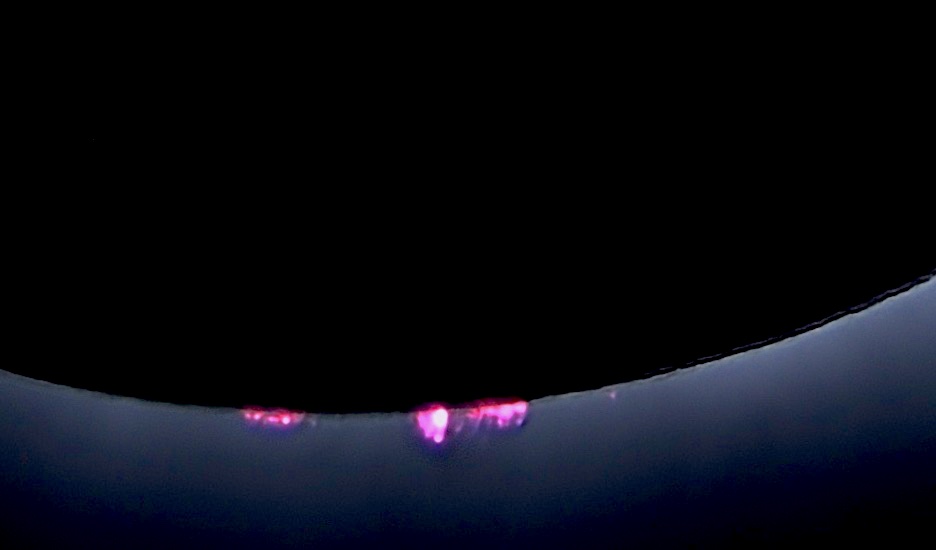
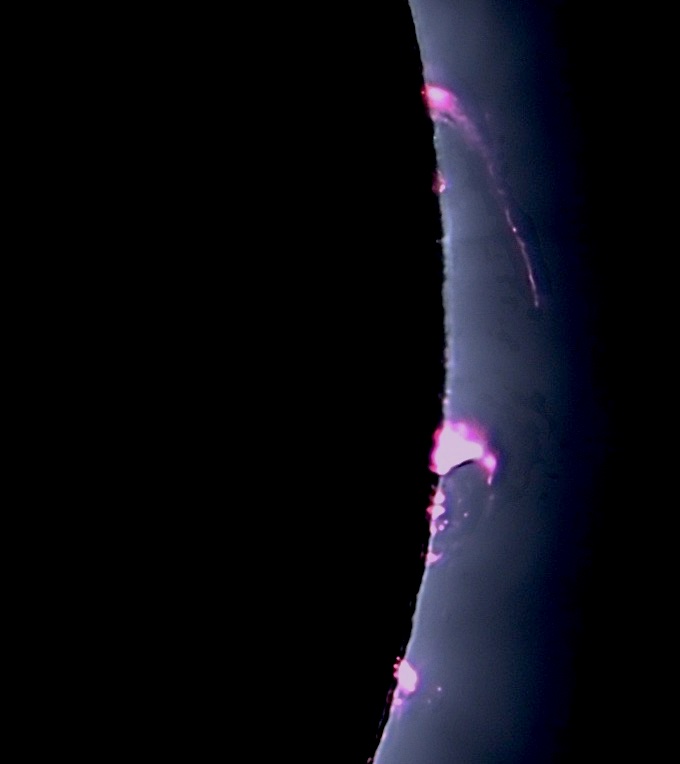
Evelyn’s images
